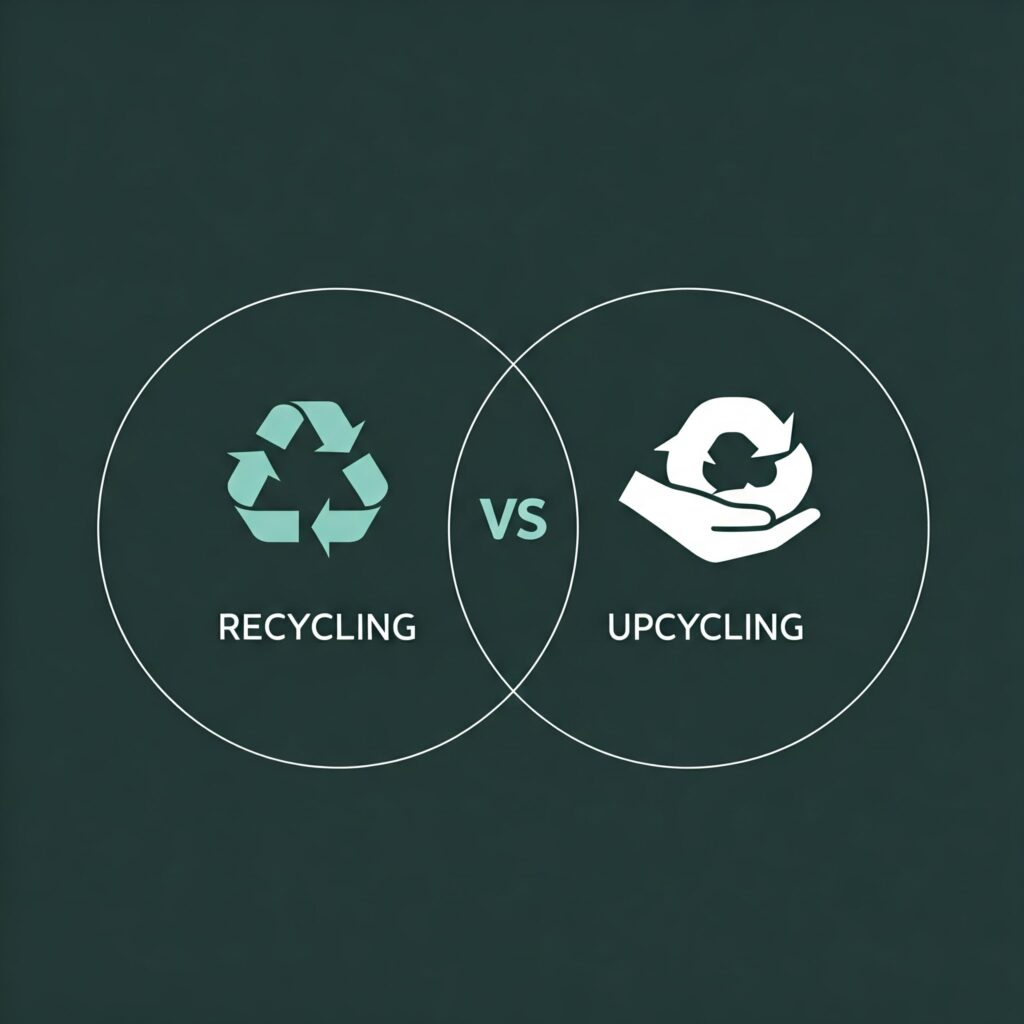Recycling vs. Upcycling

As sustainability becomes a global priority, two terms that often surface are recycling and upcycling. Both aim to reduce waste, but they differ in process, impact, and the ways we can implement them in our daily lives. Understanding these differences can help you make smarter, more sustainable choices.
What is Recycling?
Recycling is the process of breaking down used materials to create new products. Items like paper, plastic, metal, and glass are collected, sorted, and processed to produce raw materials for new goods. For instance, plastic bottles can be melted down into new plastic products or fibers for clothing. Recycling helps conserve natural resources and reduces the need for new raw materials, but it often requires significant energy and industrial processes. Not all materials can be recycled indefinitely, and the process can sometimes be resource-intensive.
What is Upcycling?
Upcycling, by contrast, is about creatively repurposing items to give them a new life without breaking them down into raw materials. It involves transforming waste into something of higher value, often through craft, design, or artistic innovation. An example of upcycling might be turning an old wooden pallet into a coffee table or converting worn-out jeans into a stylish bag. Upcycling is more about personal creativity and can often be done with minimal resources, making it a more eco-friendly option compared to traditional recycling.
Key Differences Between Recycling and Upcycling
- Process: Recycling breaks materials down and re-manufactures them, whereas upcycling involves creatively reusing items as they are.
- Resource Use: Recycling typically requires industrial processes that consume energy, while upcycling often involves less energy and fewer resources.
- Environmental Impact: Upcycling tends to have a lower carbon footprint, as it doesn’t involve energy-intensive manufacturing, whereas recycling, though beneficial, still relies on significant processing.
Which Should You Choose?
Both recycling and upcycling are valuable, but they are suitable for different situations. Recycling is great for materials that can’t be easily repurposed, like certain plastics, while upcycling is ideal for items you can transform into something new without needing to break them down. In an ideal world, a combination of both would help reduce waste, conserve resources, and encourage creative sustainability.
In the end, both practices are essential for building a more sustainable future—recycling on a larger, industrial scale, and upcycling on a personal, creative level. By embracing both, we can all contribute to a greener world.
